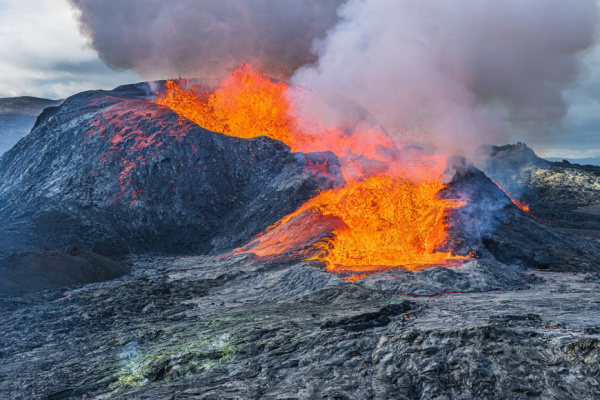Iceland has declared a state of emergency after a volcano erupted for the fourth time in three months.
As USA Today reports, the eruption opened a fissure almost 2 miles long between Stóra-Skógfell and Hagafell mountains on the Reykjanes Peninsula, according to Iceland’s Meteorological Office, which had been warning for weeks about the eruption due to magma accumulating underground.
Volcanic eruptions had slowed significantly, but the eruption has not yet ended, according to an update issued Sunday by Iceland’s Meteorological Office. Lava continues to flow from the fissure, and a lava front extends to the west and the south, now about 820 feet from Suðurstrandarvegur – the main road on the southern coast of the Reykjanes Peninsula.
The lava has moved at an average speed of about 39 feet per hour, and it could take an additional 20 hours to reach the main road at that speed, the meteorological office said.
The volcano erupted a few miles northeast of the coastal town Grindavik, about 30 miles southwest of Iceland’s capital city, Reykjavik. Grindavik was previously evacuated in November when a series of earthquakes from the Svartsengi volcanic system opened large cracks north of town.
Hundreds of people were evacuated from the Blue Lagoon thermal spa when the eruption began. Blue Lagoon, one of the top tourist destinations in the country, posted on its website Sunday that it was evacuated and has temporarily closed all operational units. It will remain closed through at least Tuesday, March 19.
“Despite these recent events, all our facilities remain in good condition and are surrounded by protective barriers designed to safeguard Blue Lagoon’s vital infrastructure against potential lava flows,” according to a statement on Blue Lagoon’s website.
No flights have been reported to be disrupted by the eruption at Kaflavik, Iceland’s main airport, or at other regional airports. No deaths have been confirmed from the four eruptions, but the Associated Press reported one worker has been declared missing after reportedly falling into a volcanic fissure.
—
Photo Credit: Marco Ritzki / Shutterstock.com
